The plight of the pudding.
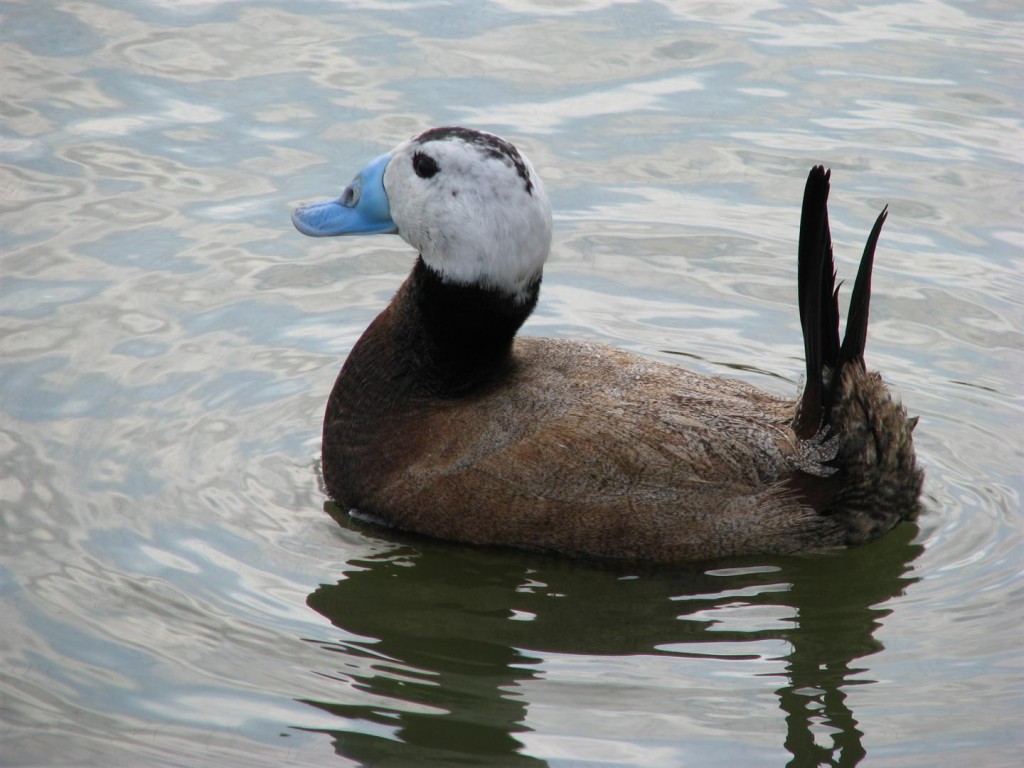
The White-headed duck, Maccoa duck, Argentine ruddy duck, Musk duck and North American ruddy duck are all collectively known as the "stifftails" or Oxyurinae sub-family. These unique little diving ducks are identified by their slim stiffened tail feathers which can be fanned or aligned to ultimately allow them to achieve excellent under-water dexterity.
Another characteristic of the stifftail family is their shape. No other duck better resembles a pudding. Their frame is small but sturdy, with remarkable musculature around the neck and breast and an even more remarkable fat tummy! These ducks spend the majority of their time on the water and so their shape aids both buoyancy and insulation. Their legs are set high on the body and to the side, allowing them to rotate them through the joints and fold them up under their wings up and out of the water. This means that the birds do not chill their legs whilst resting on the water and so keep their body temperature up. In the wild these ducks just hate walking, and so rarely leave their water body to loaf (rest) on the banks. In captivity however they feel safer, and so the ducks in the photos below are able to keep their body temperature loss at an even lower level by loafing on the grass.
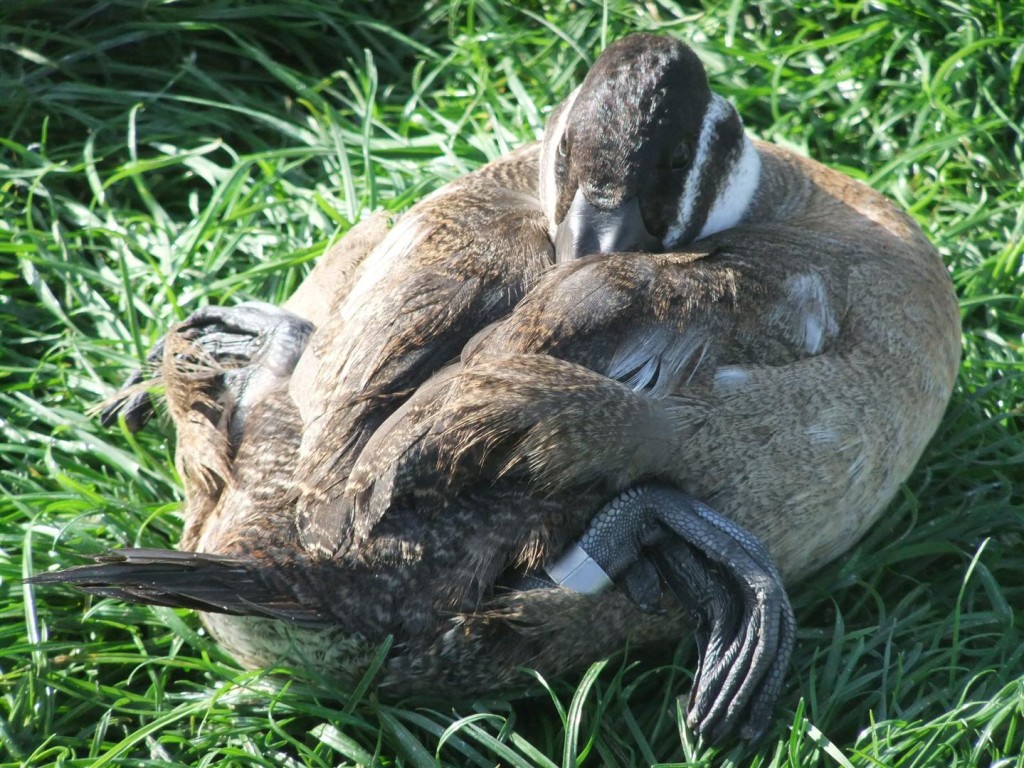
So this little pudding is the most famous of the stifftail sub-family due to their brush with hybridisation-fuelled near-extinction. The white-headed duck is Britain's more local stifftail species occupying southern European wetlands in Spain, the Mediterranean and eastern Europe. Their purity was threatened through the accidental escape of North American ruddy ducks from captive collections, as the female white-heads unfortunately found the allure of their American cousins more attractive than their own species. The secrecy and ability of these ducks to escape detection ensured that the species was suddenly very much on the brink! In under 10 years the NARD population numbered 6,000, and the native white-head population in Spain reached a cataclysmic low of just 22 birds! Following long and continued conservation efforts, the species is now relatively stable, but they remain a powerful conservation education story; condemning the introduction of non-natives into delicate ecosystems.
You can see a whole bunch of stifftails here, with Maccoa, white-head and Argies all mixed in together. As juveniles these birds have only one priority, to fatten up as much as possible as quickly as possible... They are all of them much the same at this point in their growth (6-8 months) and you have to have a monumentally good eye for details to spot the individuals species among the many shades of brown. My observations are these...
White-head = the largest of the stifftails, with a double white face stripe, biscuit coloured body (although auburn in the Spanish race), domed dark-chocolate brown head and swollen beak. A cartoonist might draw the head as a square.
Maccoa = Grainy pock-marked brown plumage all over, with a single white stripe to the face, a flattened beak and a all round 'slinky' demeanour about them. A cartoonist might draw their head as an oval.
Argentine = The smallest of the stifftails, they have partially striped brown plumage with a milk chocolatey hue, and definitely the angriest of them all. A cartoonist might draw their head as a triangle.
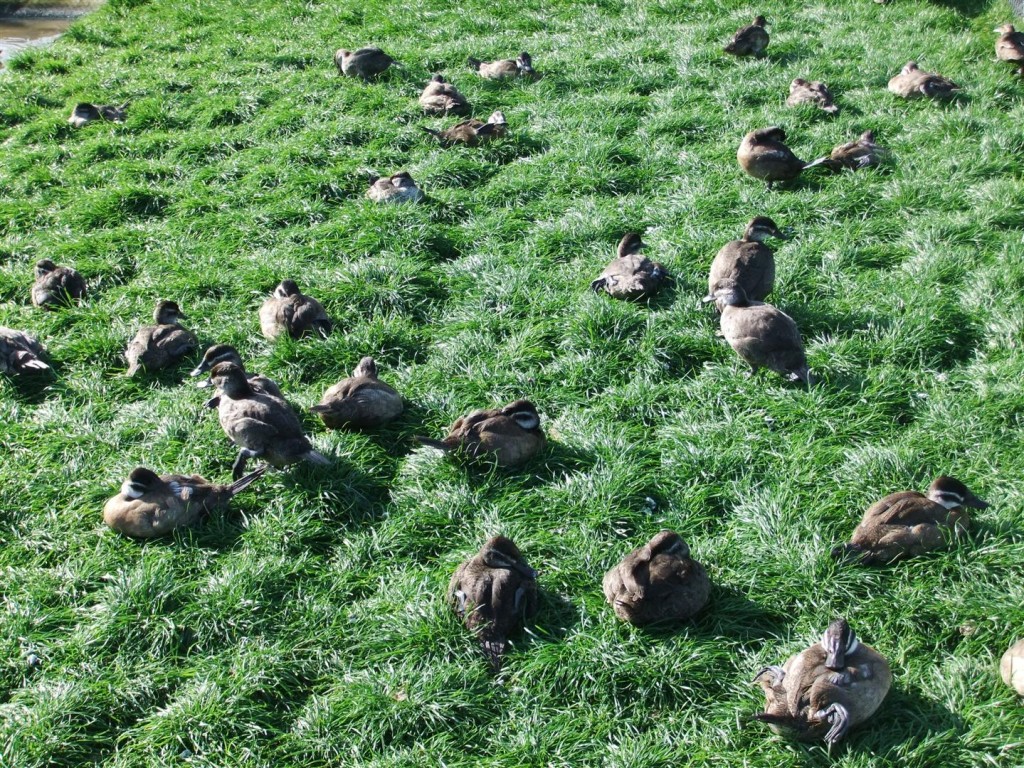
Whilst hybridisation is of course a very real threat, we do not fear to keep these species together in the same pen. Since the white-headed duck disaster WWT has been very keen for British wildfowl enthusiasts to cease keeping the North American Ruddy duck or NARD. There are now very few in the country and so the species hopefully keeps itself to itself on the other side of the Atlantic in its native land. None of the other stifftail species overlap in the wild and we find the other species very disinclined to hybridise. These species are now far enough apart as to find each other unattractive. Although we are happy to keep juveniles in mixed groups we would never allow the species to co-exist in breeding situations; it just not worth the risk.
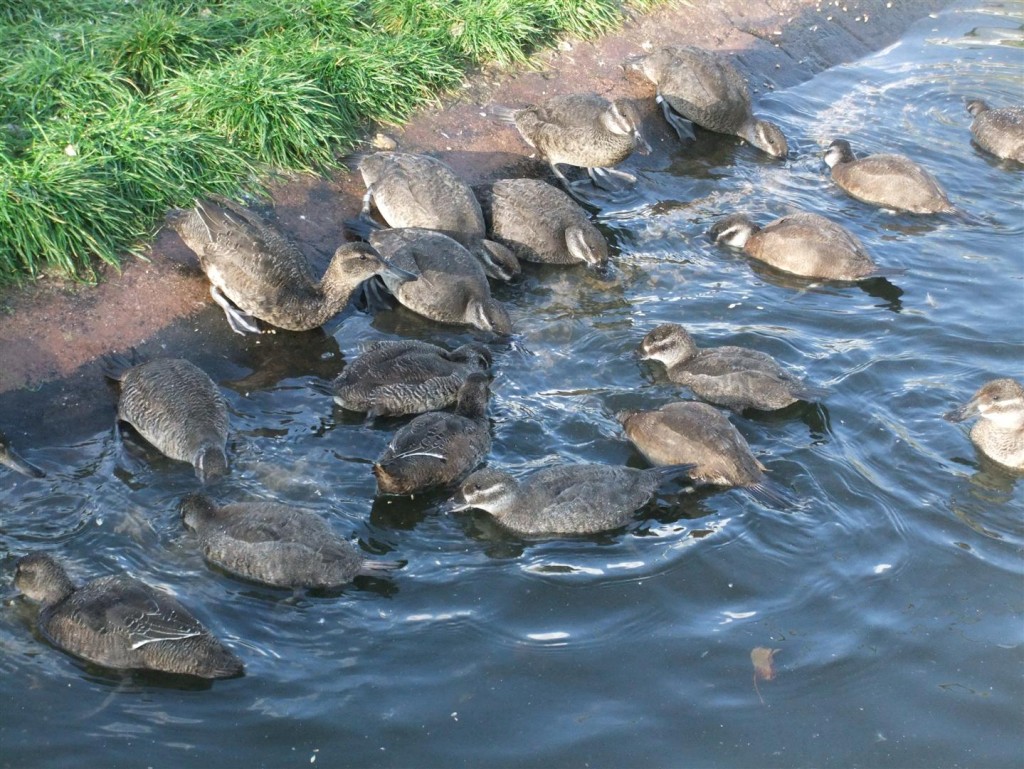
On colder days the stifftails will try do get the feeding and washing over with very quickly! The photo above features another species which although allied to the Oxyurinae family is considered distinct; the wonderful black headed duck or Heteronetta atricapilla. Yet another small long brown duck, these juveniles can easily be separated from the group due to their longer bodies and their lack of stiff tail feathers. These ducks are also unique from all other ducks due to their parasitic breeding tendencies, but we shan't go into that now... Feeding and washing is performed deftly and quickly so as to get back to the business of fattening up for spring.
We observe the species' own indicators of age and health. I would personally consider a bird that has moulted into its full plumage as mature. Seeing as all stifftail take between 2 and 3 years to fully colour up we treat this whole time period as a juvenile weaning period. As such these bird get a lot of TLC in our poly tunnels where they are fed high protein pellets and do not have to compete for food.
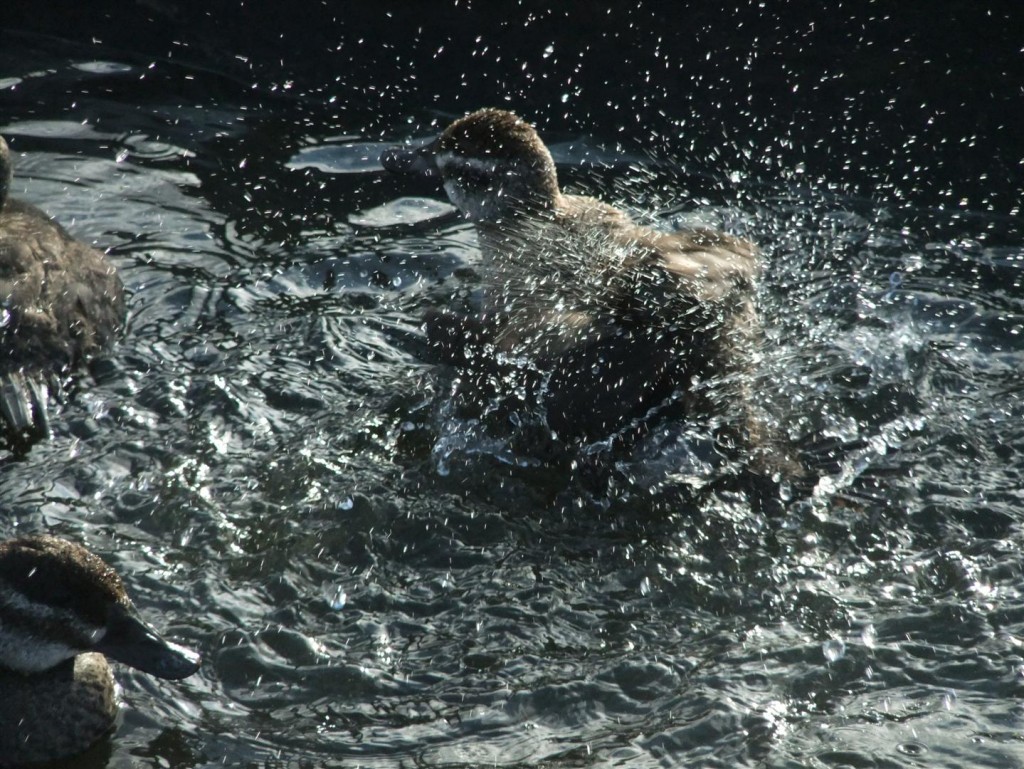
Why is a good stifftail a fat stifftail? As adults these phenomenal ducks need to live, feed, sleep, flirt and mate on open water. Adult females need to lay 5-7 eggs each one of which is over 15% of their own body weight, incubate for 28 days and then guide and defend her brood. The males need to spend their lives showing off for fear of losing their status, but male stifftails also need to maintain their manliness in a quite literal way. With the largest reproductive organ of all vertebrates in relation to body size, it needs to be stored internally in a well insulated body. In the height of the breeding season the males can barely walk on land their bodies are that big!
A fat stifftail then will have enough energy bound with its flesh to sustain it through all of these unmissable life experiences. Investing in a stifftail then can only ever bring good returns.

